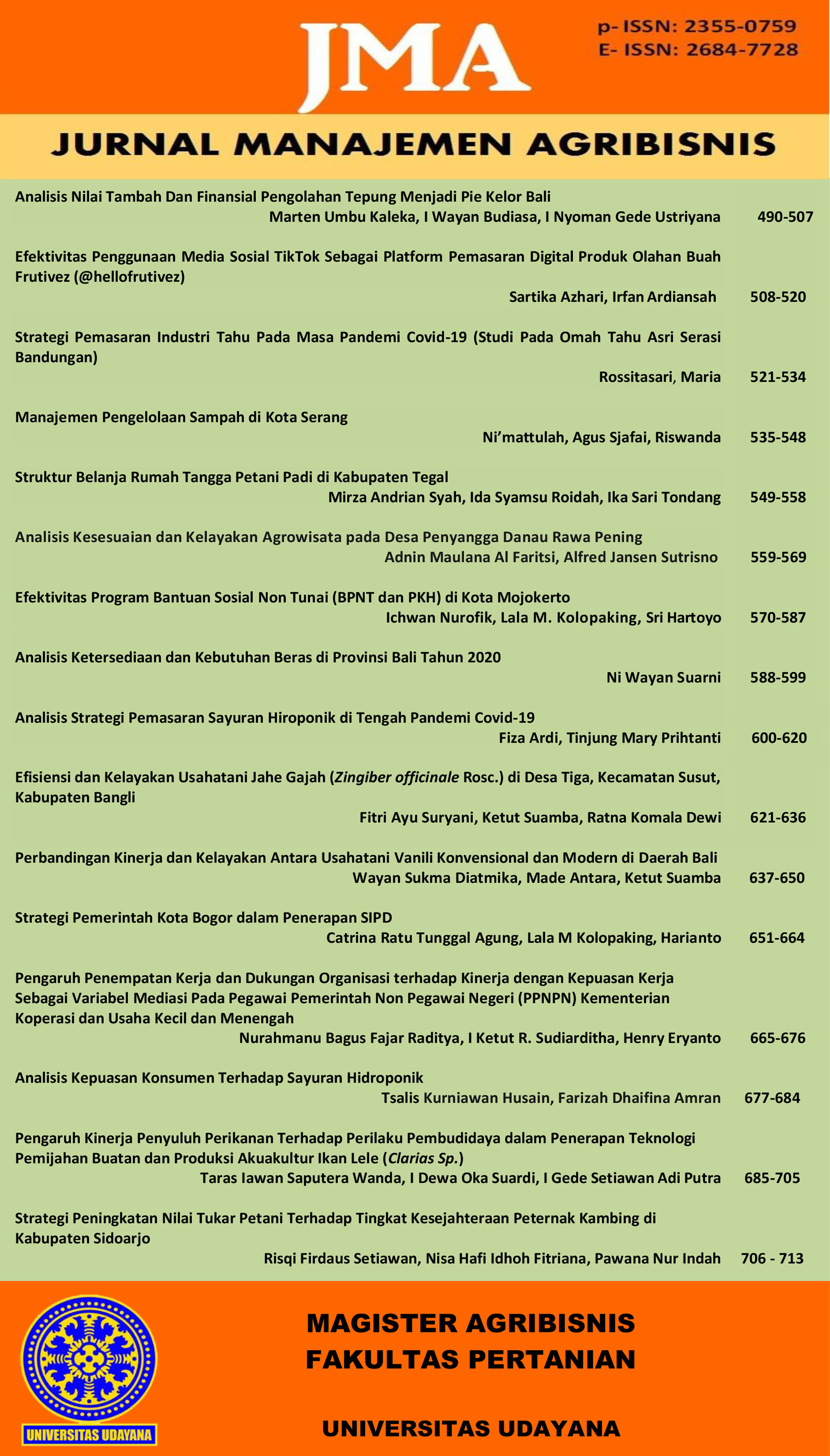Perbandingan Kinerja dan Kelayakan Antara Usahatani Vanili Konvensional dan Modern di Daerah Bali
Abstract
Indonesian vanilla, especially Bali, has a high selling value, and has potential as an export commodity that can provide great benefits for farmers and plantation managers. The purpose of this study was to analyze the feasibility and performance of vanilla farming using conventional and modern cropping patterns in Bali. This research was conducted in Tabanan Regency for conventional farming and in Badung Regency for modern vanilla farming. Location selection is determined purposively sampling based on certain considerations. Analysis of the data used is a quantitative method. The results showed that (1) the productivity of conventional farming compared to the modern pattern was 1:9, (2) The feasibility analysis of the two farms was feasible where the net present value was greater than zero, net B/C was greater than one. The IRR is greater than the prevailing interest rate of 12% and the payback period is short. (3) The results of the comparison of the performance and feasibility of the two vanilla farms show that modern vanilla farming is superior to conventional farming methods. Based on the results of the study, it can be concluded that modern farming patterns deserve to be recommended and become the main choice. Suggestions in this study are for stakeholders to use modern vanilla farming because of its good performance and development prospects so that it becomes the main choice.













